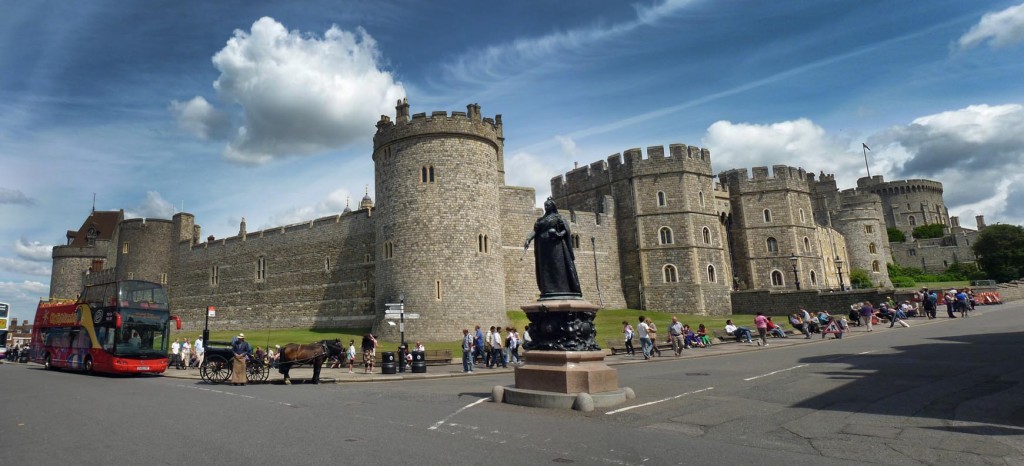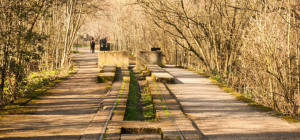 Windsor Castle, located in Windsor in the English county of Berkshire, has been a royal residence of British kings and queens for more than 1,000 years. Anyone visiting Windsor usually takes a tour of the Castle which has had a long association with the English and later the British Royal family and has a stunning architecture. It was originally built in the 11th century by William the Conqueror after the Norman invasion of England and it has been used by all monarchs since the time of Henry I. It is the longest-occupied palace in Europe and its main features include the lavish early 19th-century State Apartments and the 15th century St George’s Chapel.
Windsor Castle, located in Windsor in the English county of Berkshire, has been a royal residence of British kings and queens for more than 1,000 years. Anyone visiting Windsor usually takes a tour of the Castle which has had a long association with the English and later the British Royal family and has a stunning architecture. It was originally built in the 11th century by William the Conqueror after the Norman invasion of England and it has been used by all monarchs since the time of Henry I. It is the longest-occupied palace in Europe and its main features include the lavish early 19th-century State Apartments and the 15th century St George’s Chapel.
The Castle occupies 13 acres of land and is a grand mix of a fortification, a palace and a small town. It also has a Georgian and Victorian design based on a medieval structure and it is reputed to be the largest and oldest occupied Castle in the world. Her Majesty The Queen spends most of her private weekends at this Castle. When she is present in the Castle, a flag can be seen flying from the Castle’s Round Tower. Even if you see the Royal Standard, you can be sure that she is staying there. Windsor Castle has a lot to offer and as such it may take at least 2.5 to 3 hours to see everything. The impressive and historic Castle has been used as a military headquarters during the Civil War and as a refuge for the Royal family during World War II and now it is Queen Elizabeth II’s favourite weekend home. If you have a London Pass with Travel package, your travel to Windsor Castle will be free along with a free self-guided audio tour that lasts around 2 hours. The highlights of the Castle include the traditional State Apartments and Queen Mary’s Doll House.
Interesting Facts
The grounds of the Castle cover nearly 5 hectares. The windows of Windsor Castle were blacked out during the Blitz in World War II and the royal bedrooms were strengthened as a safety measure in case the castle was bombed. St George’s Chapel located in the Castle is the burial place of 10 monarchs and is considered to be one of the most beautiful and impressive buildings in England. South of the Castle, there is The Long Walk that extends for 3 miles in a straight line and is a paved avenue of trees. Half a mile from the Castle, the exclusive and renowned school Eton College is located. About 500 people were living and working in the Castle as of 2006.
The salient features of Windsor Castle include the following.
State Apartments: the State Apartments constitute the major part of the Upper Ward and are situated along the north side of the quadrangle. These are modern buildings that stand on medieval foundations laid by Edward III. On the ground floor you can find the service chambers and cellars while the first floor is more graceful and forms the main part of the palace. Since the Castle has been home to more than 39 monarchs over the years, its tastes and decor have varied over the centuries. As such, the differing tastes of different royal occupants are reflected in its lavish furnishings and treasures from the Royal Collection and include masterpieces by Rubens, Holbein, Brughel, Rembrandt, Carnaletto and Van Dyck.
Queen Mary’s Dolls House: Built for Queen Mary in the early 1920s by the leading architect Sir Edwin Lutyens, the Dolls House is the most intricate and largest in the world. It has a small scale at 1:12 but it comprises one-off specially commissioned pieces made by leading artists and craftsmen. You can appreciate the minute details of the library, wine cellar and marvel at the facilities, including running water and electricity that are worth observing.
St George’s Chapel: Home of the Order of the Garter established in 1348 and the tombs of ten monarchs including Henry VIII and Charles I, St George’s Chapel is a Gothic masterpiece that showcases the excellent style of architecture in the country. Worshippers can attend the Sunday services at St George’s Chapel but it is closed to general visitors on Sundays. It is open Monday to Saturday and it closes at 16:15 (last entry 16:00) in order to prepare for the evening service at 17:15 (doors open at 17:00).
Changing of the Guards: The ceremonies of the Changing of the Guards and the traditional military parade take place up the High Street and into the castle to the Lower Ward and last about 30 minutes. It starts at 11:00 but you can see the march up the hill at 10:50. If the weather permits, a band accompanies them. The Guard March takes place all year round on alternate days from August to March and daily during April, May, June and July (apart from Sundays). The schedule of the Changing of the Guards is set by the British Army.
Waterloo at the Windsor (1815-2015); This exhibition marks the 200th anniversary of the Battle of Waterloo and the defeat of Napoleon. The Waterloo Chamber at Windsor Castle was created by George IV in celebration of the allied victory, where portraits of those instrumental in the victory, among them the Duke of Wellington were displayed.
Contributed by: www.parkgrandheathrow.co.uk







